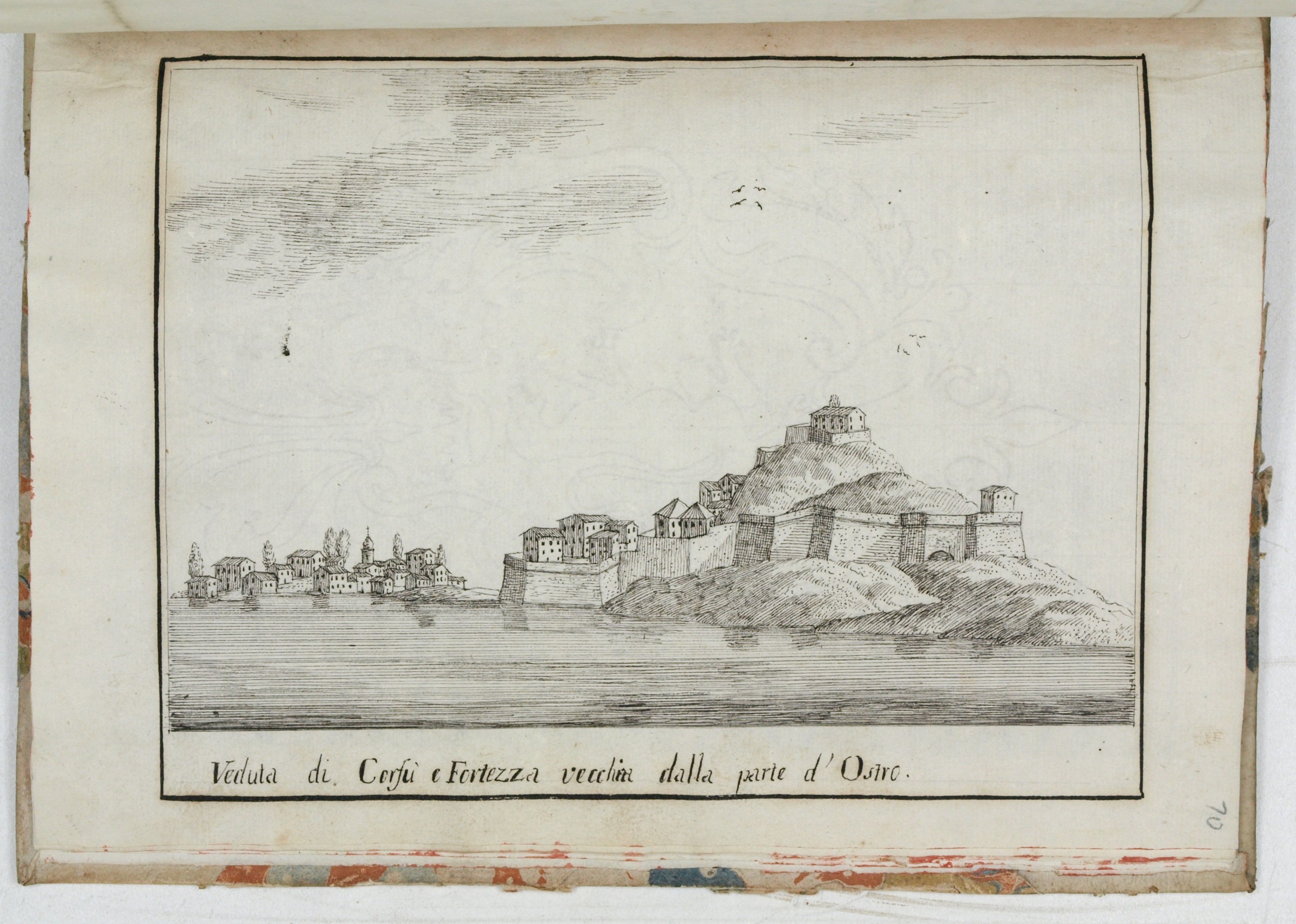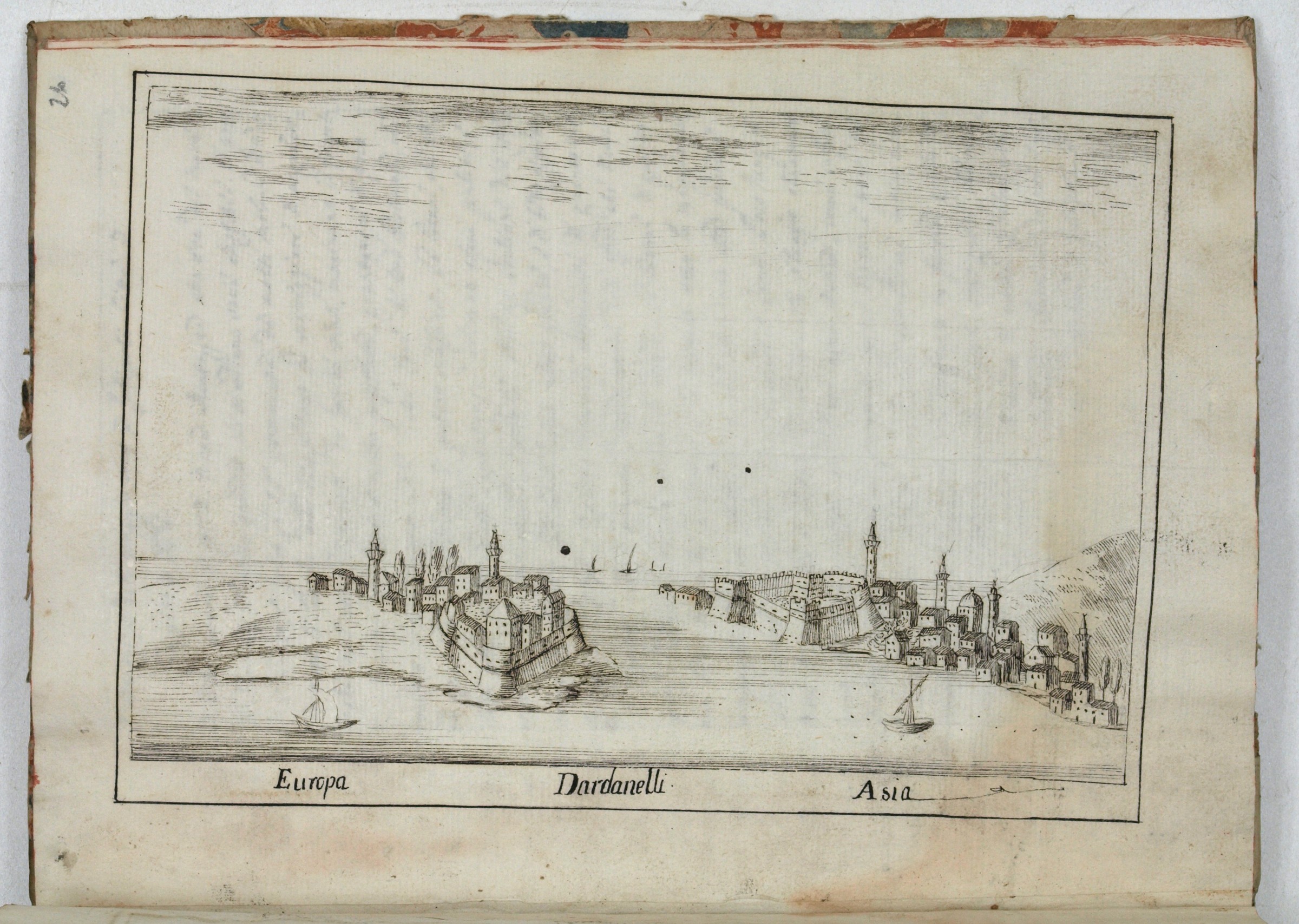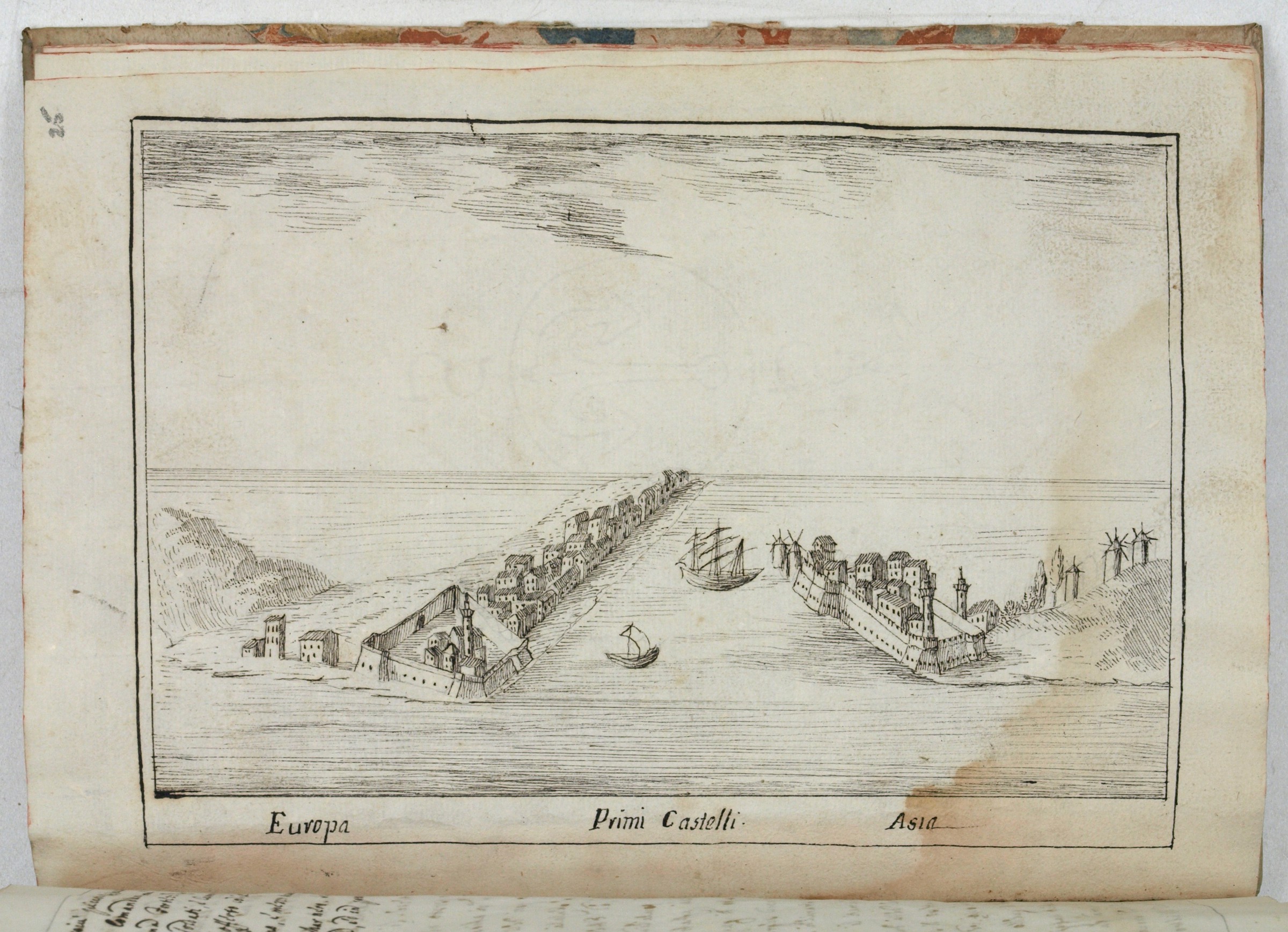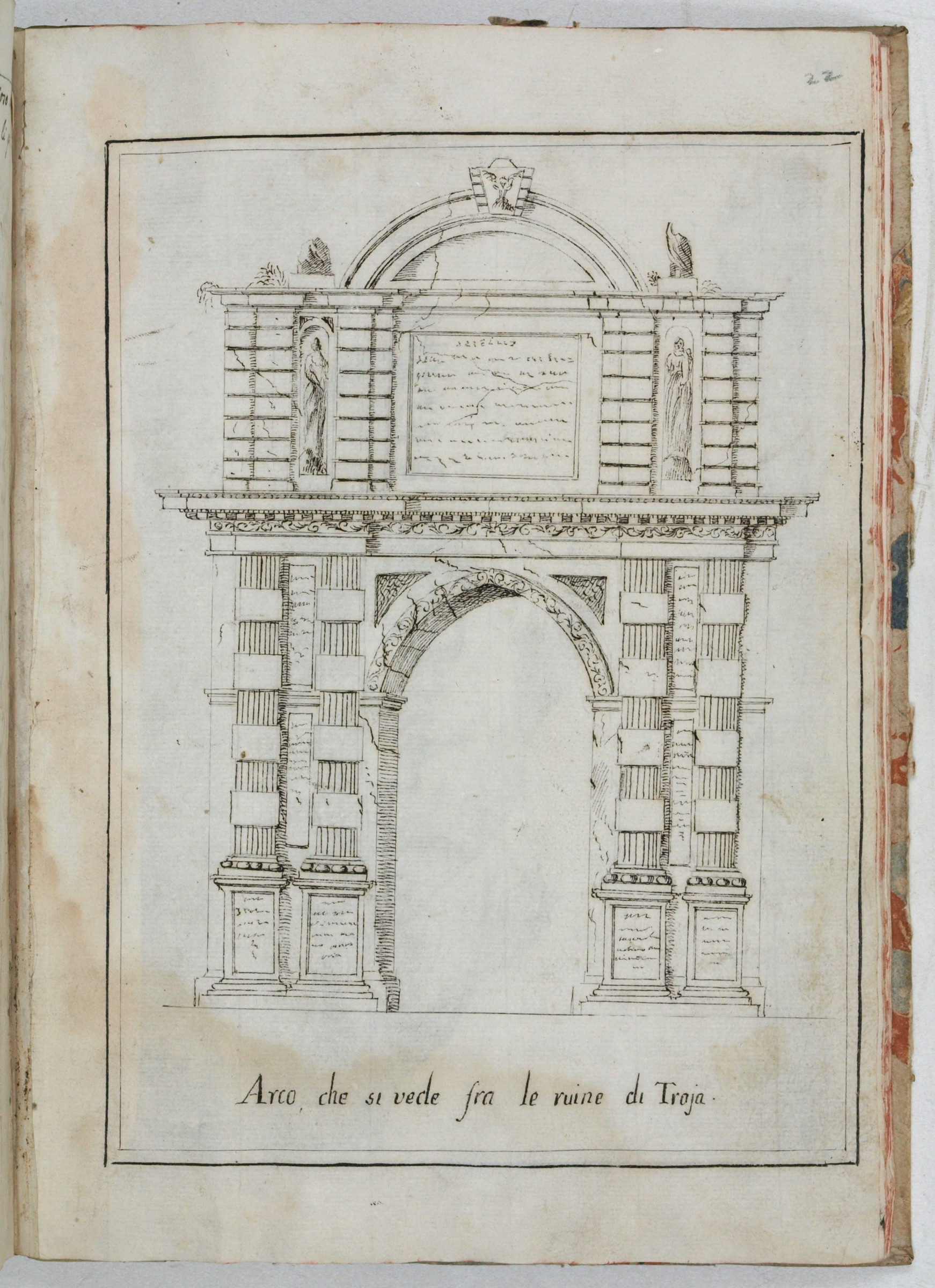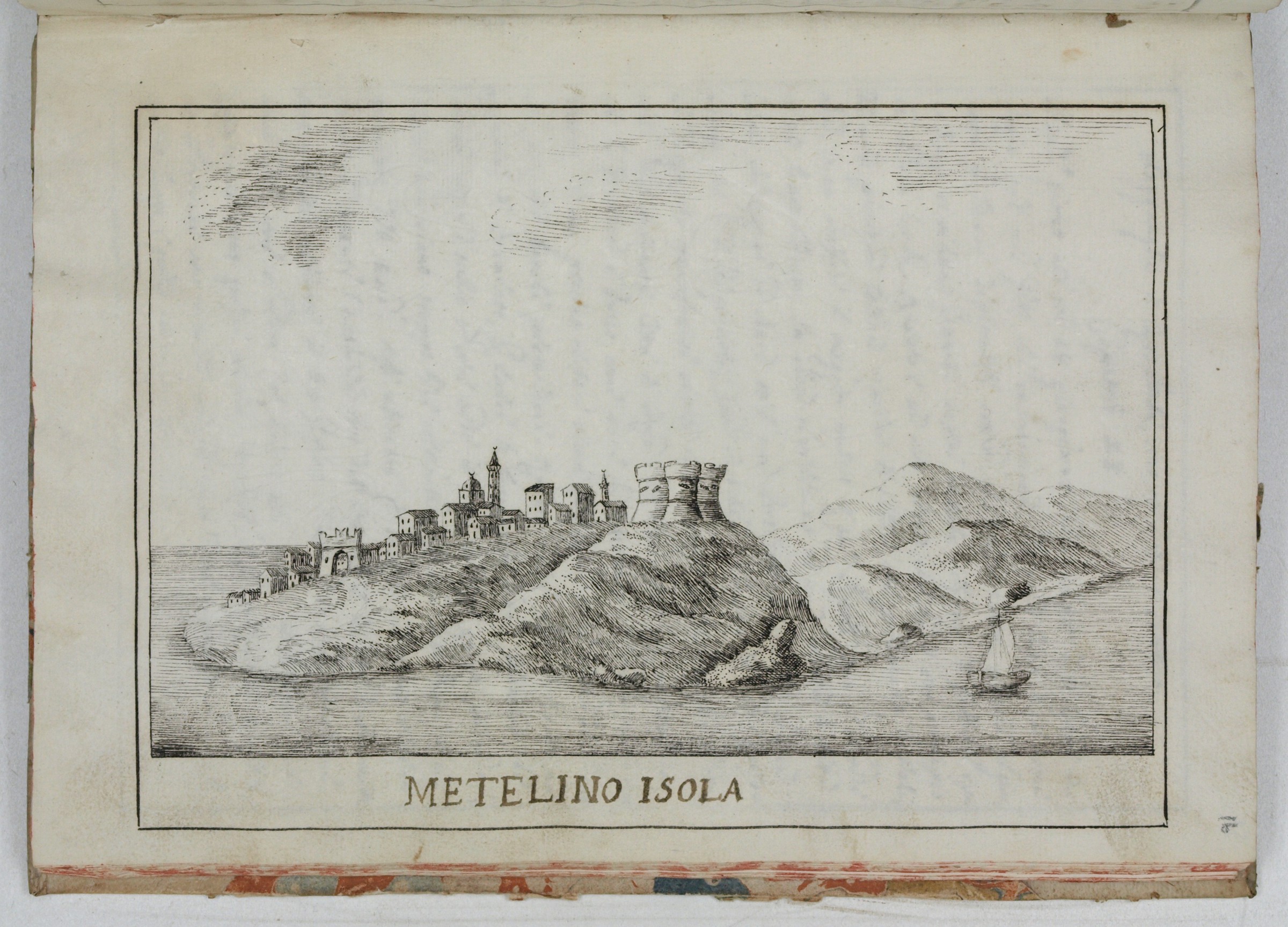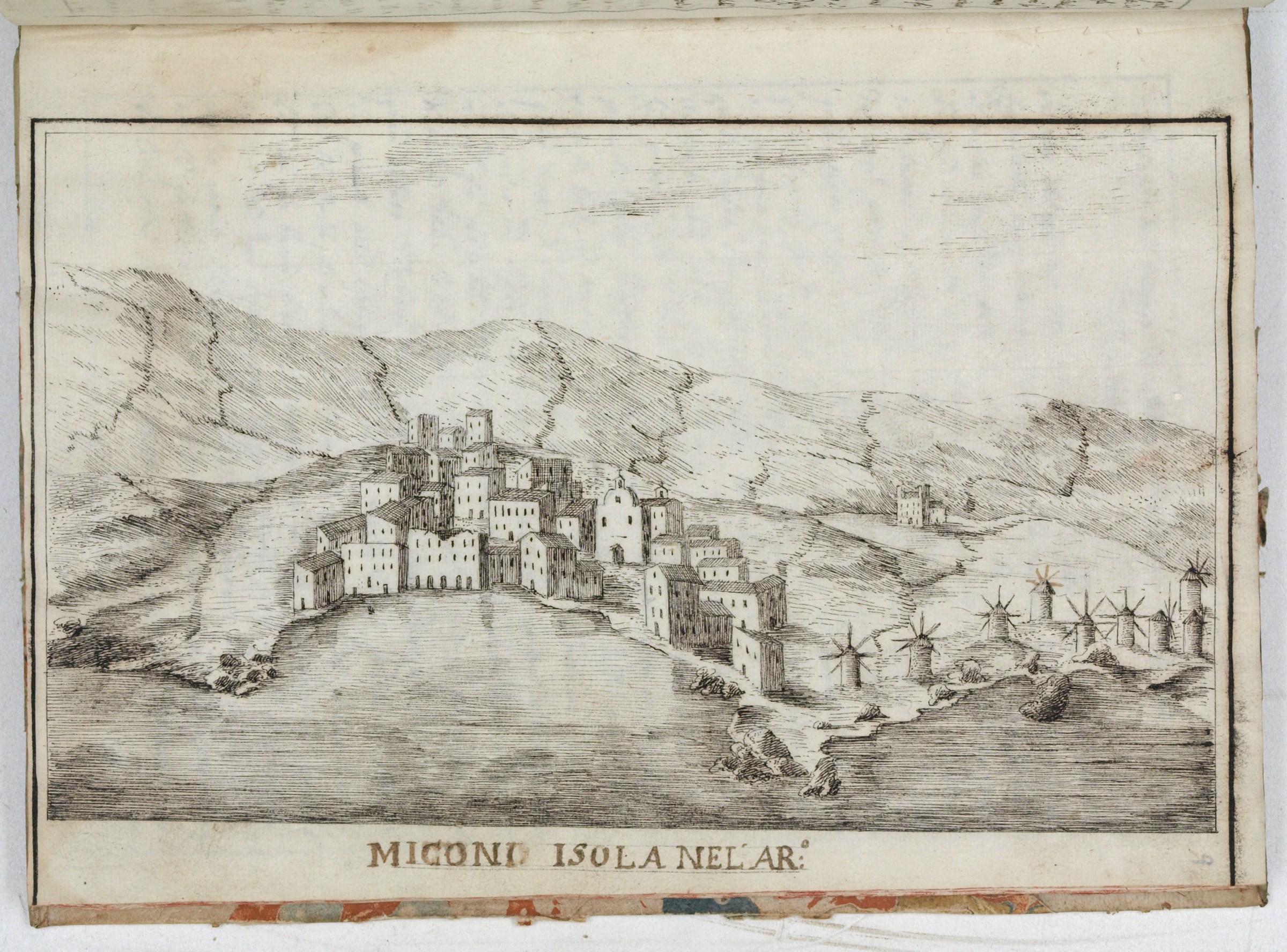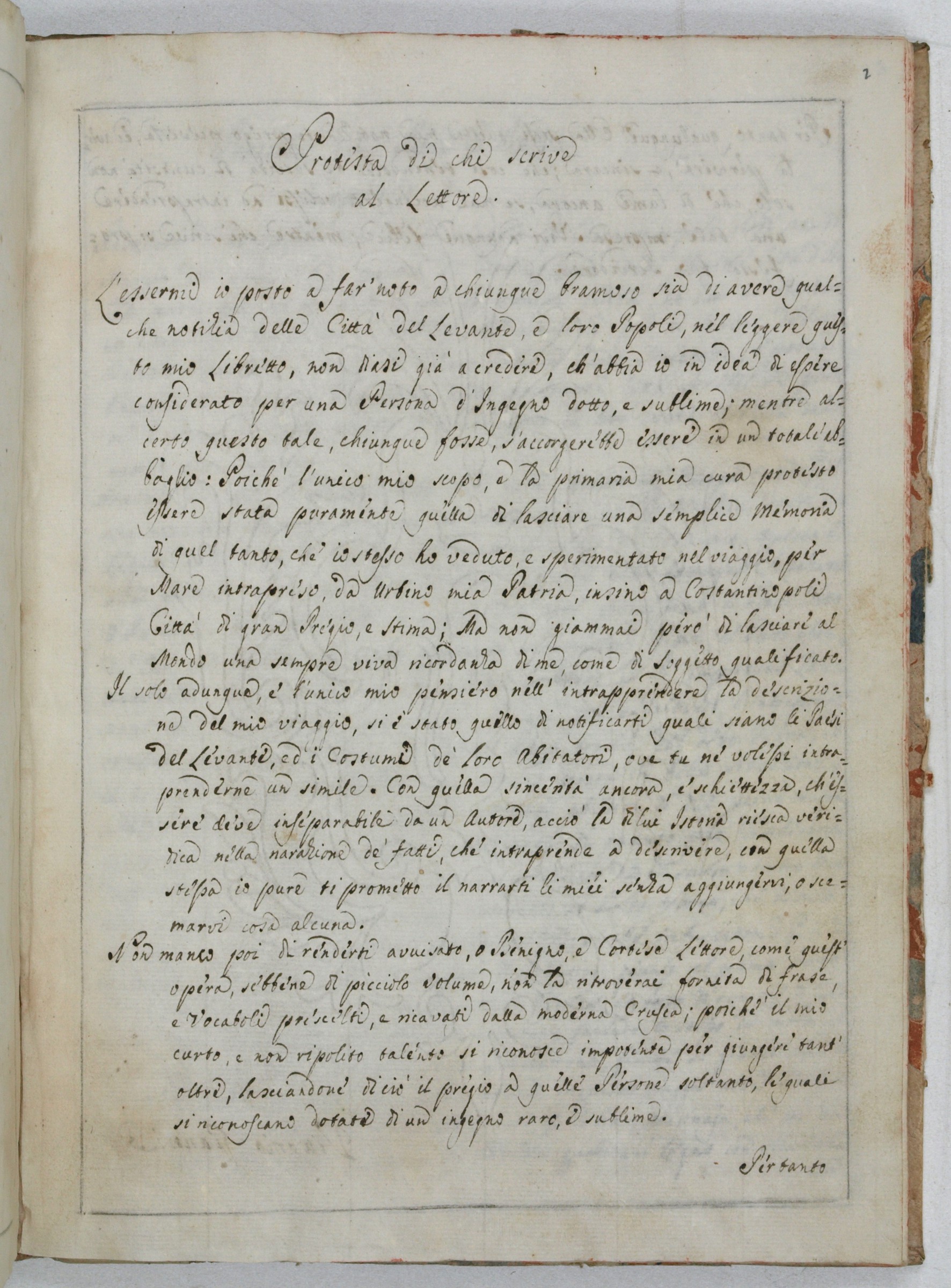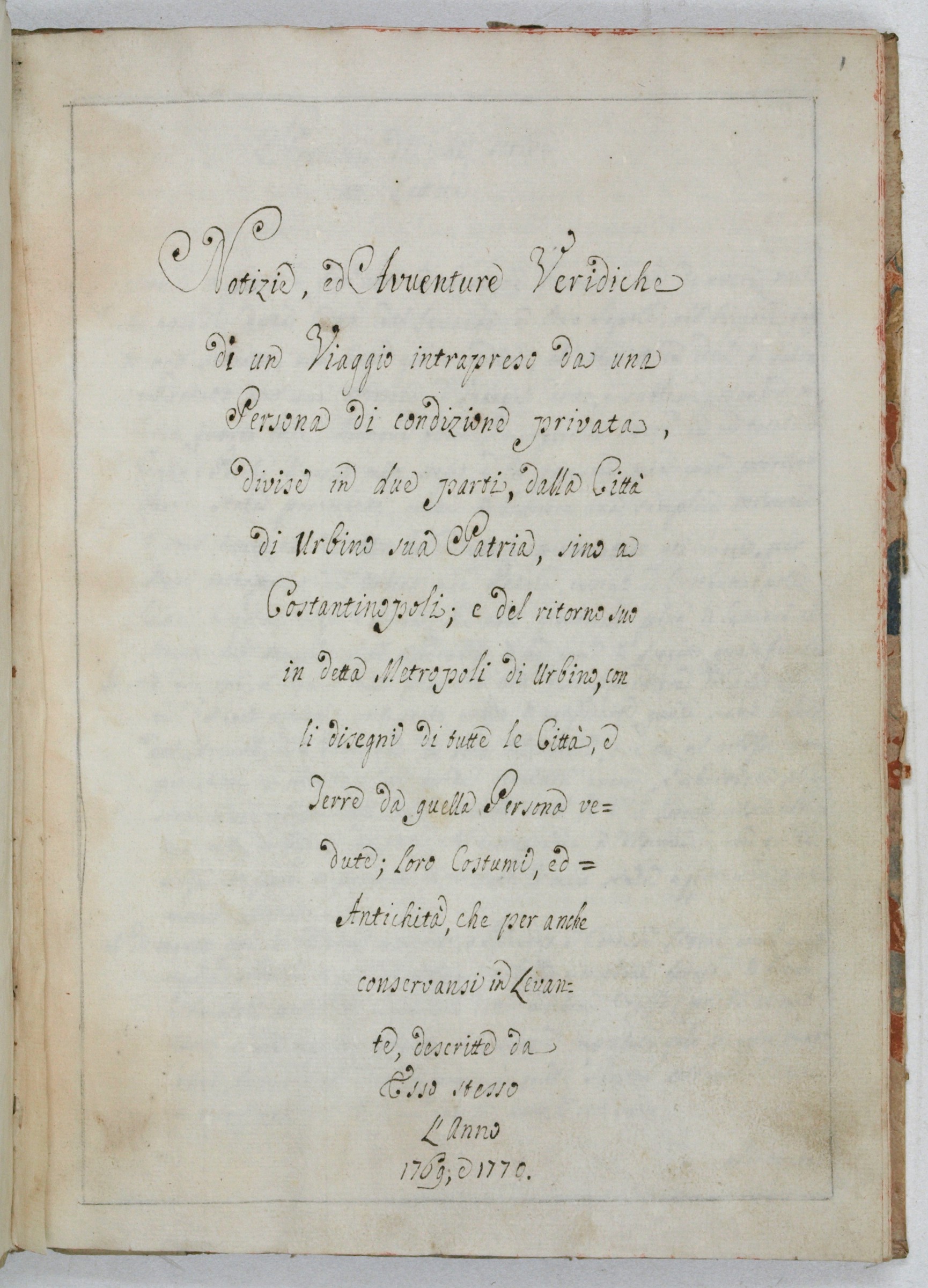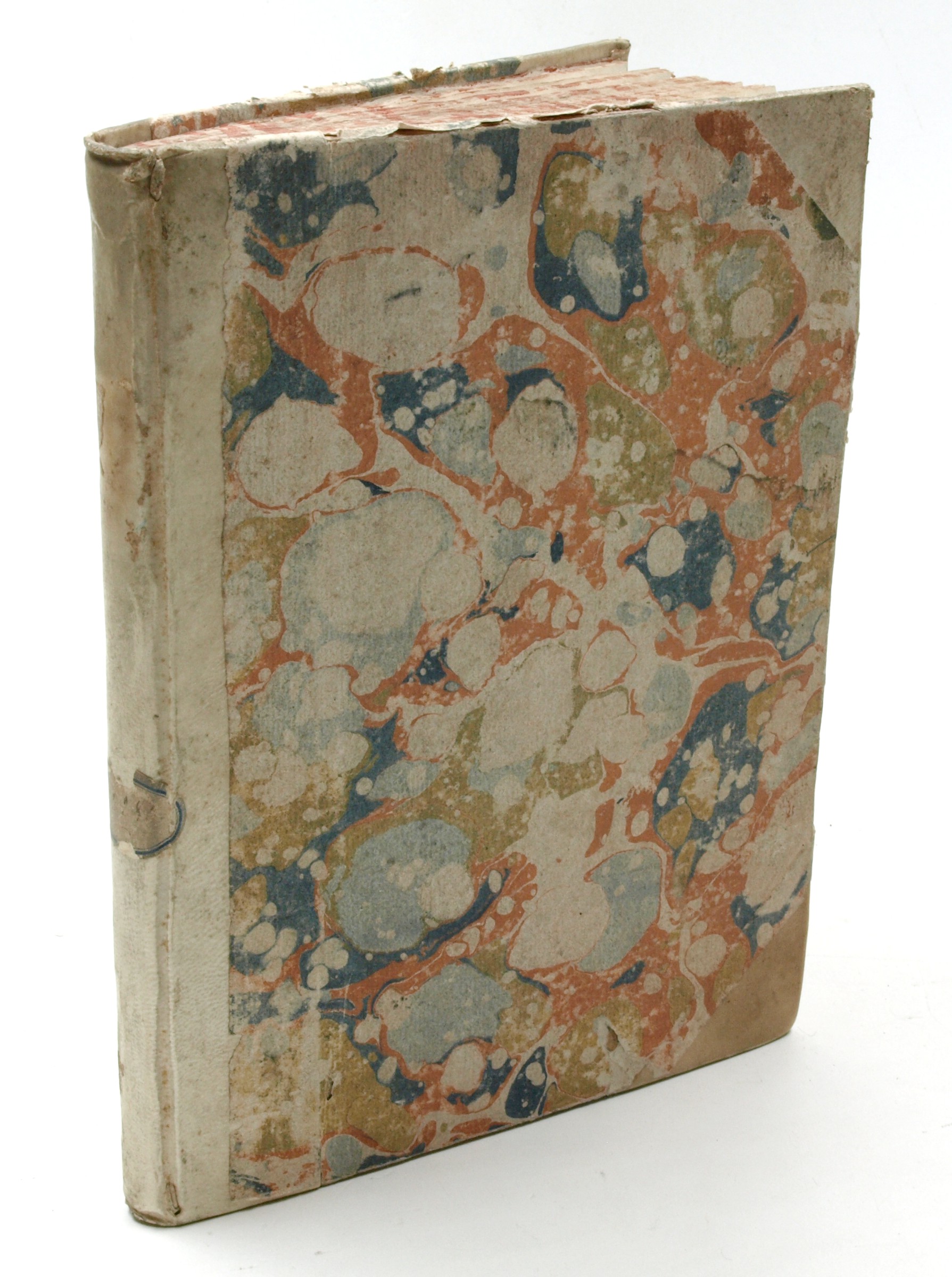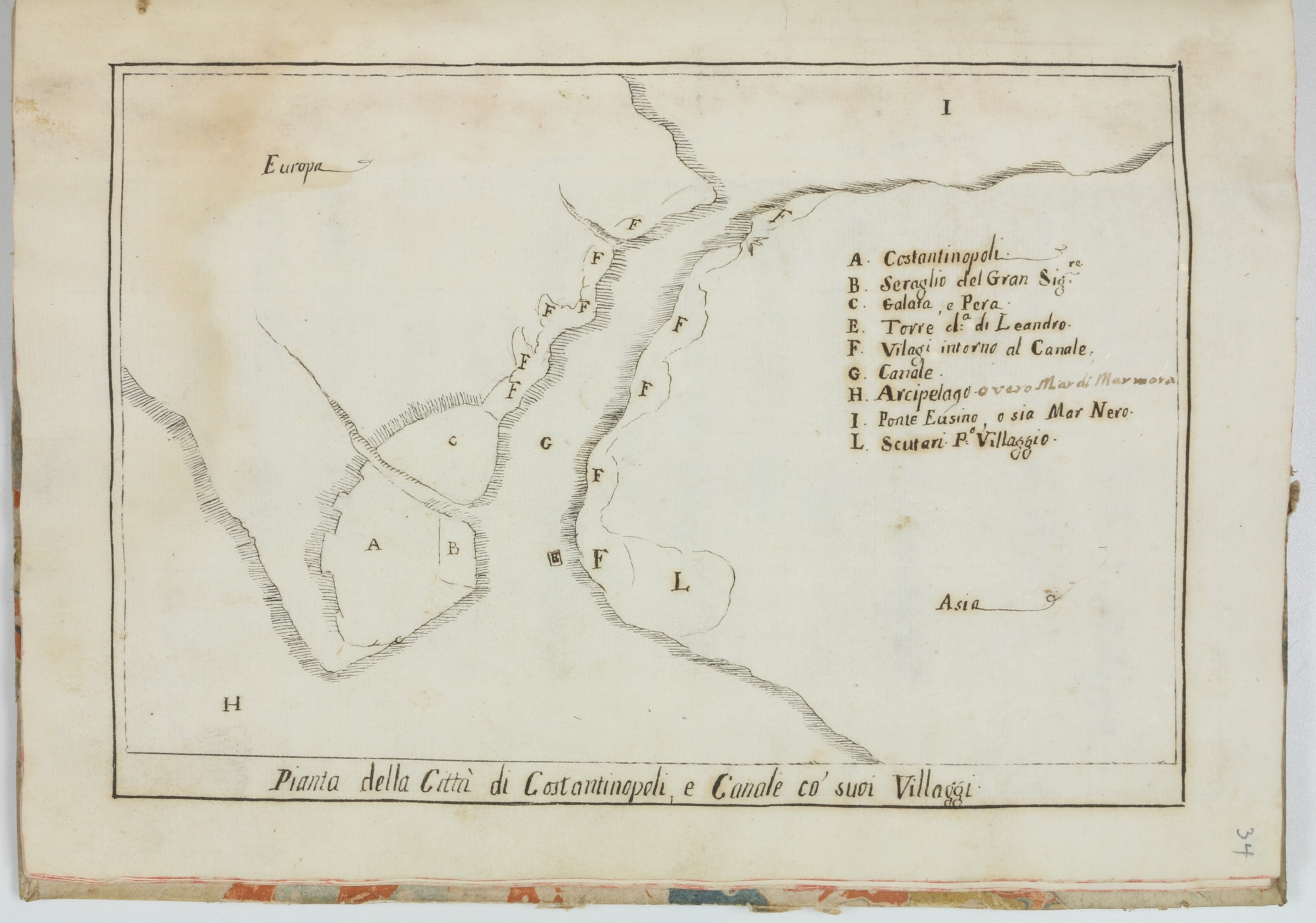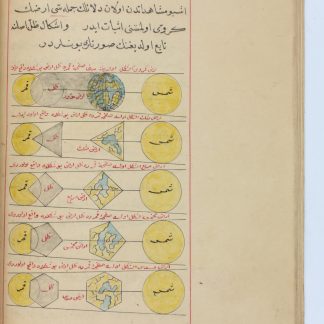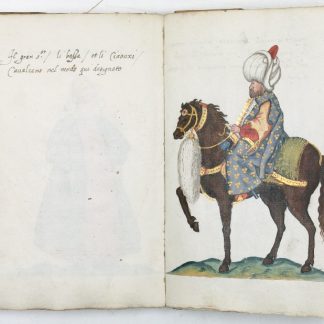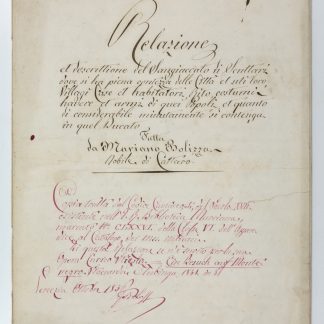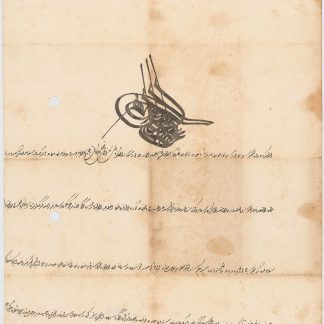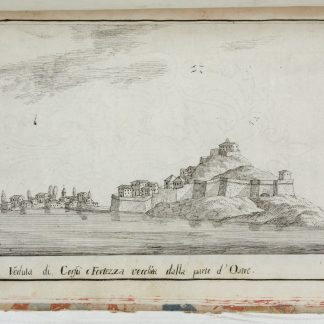An unpublished manuscript travelogue to the Middle East, with 29 original drawings
Notizie, ed aventure veridiche di un viaggio intrapreso da una persona di condizione privata [...] di Urbino [...], sino a Costantinopoli; e del ritorno suo [...].
Folio (235 x 170 mm). Italian manuscript in two parts with 29 original pen and ink drawings (15 and 14), written in black ink in a neat, legible hand, 28 lines to a page. (1), 95, (1) pp. (including illustrations numbered in pencil, upper right, but recto only). Collation, including illustrations: [1 f., 1 p.], [21 ff., 35 pp.], [6 pp.], [17 ff., 26 pp.], [5 pp.] (several sheets cut so that a tab only remains of the second page, and all illustrations tipped in). Contemporary half vellum over marbled paper boards. Generally written on both recto and verso, except for the two title-pages and the illustrations (recto only); all but first and last page enclosed with a single line border, in pencil for text pages and in ink for illustrations.
€ 75.000,00
Unpublished manuscript giving a vivid and event-filled first person account of a journey from Urbino to Constantinople, well legible and beautifully presented with 29 equally unique pen-and-ink illustrations.
A unique account of a journey from Urbino to Constantinople and back, in 1769-70, hand-written and accompanied by 29 original drawings, which offer views of islands rarely if ever depicted in contemporary travel accounts or series. No counterpart has been found for the illustrations, which appear to have been prepared from eye-witness records. That the artist may have been the author himself is suggested by the fact that he makes no mention of a separate artist, and by the manner in which he introduces the first illustration: 'Il Paise è piccolo come vedrassi della figura, che di curiosita, ed intelligenza di lettori porro a piedi di questo capitolo' (p. 5v). The story of his adventure is equally idiosyncratic, incorporating both a record of foreign places, people and customs common to other such literature, and also an account of a personal tragedy and a dangerous sea-voyage. The manuscript falls within a tradition of cultural exchange and travel writing between Europeans and the Orient; but unlike Luigi Mayer, for example, employed to make drawings of the historical buildings of Constantinople by the English ambassador Sir Robert Ainslie shortly afterwards, or J. B. Hilair, whose paintings made on a trip throughout the Empire with the French ambassador Count Choiseul-Gouffier in 1776, and engraved and published in Gouffier's "Voyage pittoresque de la Grèce" (1778-82), Gianni appears to be an entirely independent figure. Though the manuscript is set out like a printed book and was presumably destined for wider distribution in that form as a money-making enterprise, Gianni does not seem to have been commissioned, nor to have hoped for patronage. His stated aim is simply to give a true account to his readers, in case they might wish to undertake a similar journey. His route takes him through great cities such as Venice, Athens, Smyrna and Gallipoli, ancient sites such as Troy and Heraklia, through the Peloponnesus and islands such as Mykonos, Corfu, Maitos and Skios, all of which he describes and depicts in detail. Meanwhile, although he says that he is not writing in order to leave "una viva ricordanza di me, come di soggetto qualificato", that is precisely what he does: the second part of the book recounts his search for his son from whom he had heard nothing but that he had married a Greek girl. Reunited with him through a doctor who has been helping the boy through an illness, he tries to persuade the young couple to return with him to Urbino, but this plan is thwarted by the machinations of the doctor. His journey home, alone, is enlivened by an encounter with corsairs, a near shipwreck, a boy falling overboard and a violent storm. The value of this book lies not only in the unique, unpublished text and illustrations, and legible and attractive presentation, but also in the combination of commonly-found themes such as dress and customs, with an entirely personal and richly-told narrative of one man's search for his son.
One illustration (Smirne) has been trimmed along the right edge after having been bound in. Etched armorial bookplate of an unidentified noble bishop on front pastedown.

